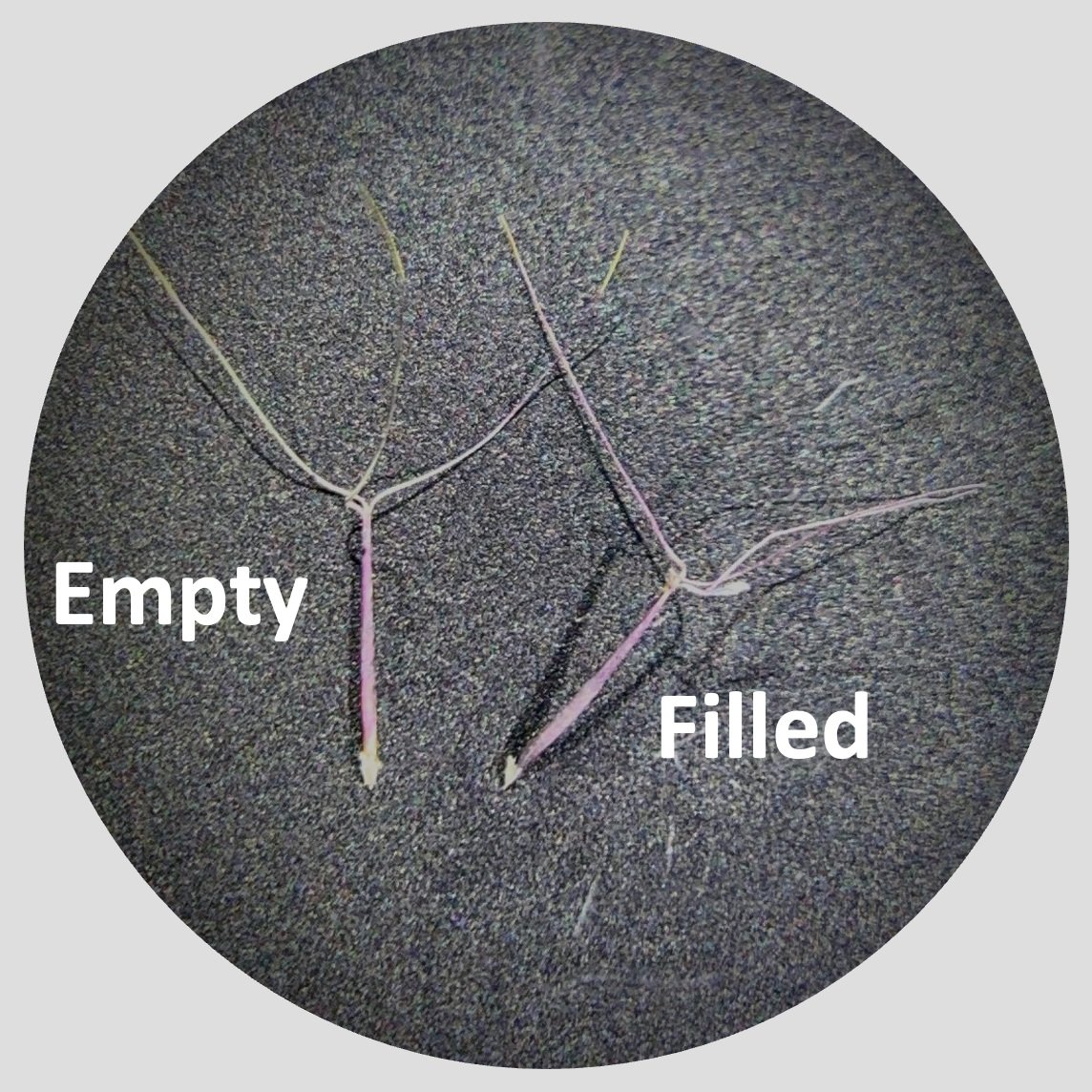Press test for determining wiregrass seed quality
Many wiregrass seeds behave a bit like a “wolf in sheep’s clothing.” This is a story most of us hear in our youth whether from a fable or the Bible. As stated in Matthew 7:15 (King James Version), “Beware of false prophets, which come to you in sheep's clothing, but inwardly they are ravening wolves.” It would be a stretch of the imagination to call a wiregrass seed a ravening wolf, but the concept of disguise itself seems to describe the dichotomy between wiregrass seeds that germinate versus those that don’t.
Let us explain! A wiregrass plant produces seeds that are either filled with the undeveloped plant embryo which – if the embryo is healthy and is exposed to the correct conditions-- can germinate into a little seedling, or they are empty. Those that are empty are like the wolf pretending to be a sheep. Empty seeds look very similar to the filled seeds but will definitely not germinate. See photo at left for an example of filled and empty seeds that appear very similar.
It is important to consider the proportion of filled seeds you have because this will help determine your seeding rate. You might find that you have very few filled seeds, which we have discovered in an annually burned site (not that all annually burned sites would produce lots of empty seeds). Or you might find that you have few seeds overall, but many of them are filled, as we have observed in very young plants.
Luckily, we have some methods for determining whether seeds are filled or empty to help practitioners gain a better understanding of their seed lot, and if necessary, augment their restoration plans. I have mentioned one such method, x-raying seeds, in a previous blog post. Another test is formally called the wiregrass enhanced forceps press test*. This is a quick and simple test for determining whether a wiregrass seed is filled. To get an estimate of the proportion of seeds that are filled in your seed lot, consider taking 5-10 samples of 50 seeds from your seed lot, and use the press test to determine the number of filled and empty seeds. The press test is faster than sending off seeds and waiting for results, but you do have to test each seed individually. Once you master the method, we estimate it would take about an hour to test 100 seeds and all you need are some forceps (or tweezers).
Dr. Hector Pérez and graduate student, Sarah Tevlin, recorded an instructional video detailing how to conduct a press test, which you can watch here:
If you use this method for testing seed quality, we would love to hear any tips and tricks you discover!
*Pérez, H. E., & Norcini, J. G. (2010). A new method of wiregrass (Aristida stricta Michaux.) viability testing using an enhanced forceps press test. Natural Areas Journal, 30(4), 387-391.
